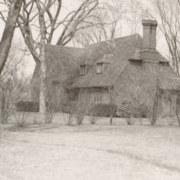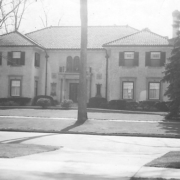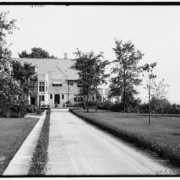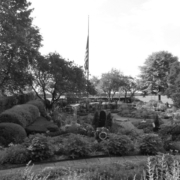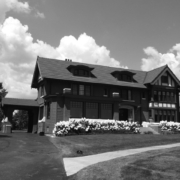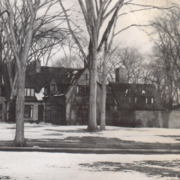Historical Architecture of Grosse Pointe – 1017 Lake Shore
Last week we were in Grosse Pointe Shores to present the four residential projects Albert Kahn completed on Lake Shore between 1910 and 1930, two of which have been razed. This week we stay with one of those homes, or at least the housekeeper’s residence that was originally part of the Edsel and Eleanor Ford Estate, designed by Albert Kahn and completed in 1929. Located at 1100 Lake Shore the estate was originally located on 125-acres. The property also included the head housekeeper’s cottage which is now a private residence 1017 Lake Shore.
1017 Lake Shore was completed in 1930, after the main residence was finished in 1929. The quaint cottage in the woods was originally used as the housekeepers’ residence for the Ford Estate. While it is alleged the cottage’s first occupants (based on the 1930 U.S. Census) was a couple who came from England, Charles, and Pauline Wilshire, it has also been confirmed a woman named Ada Hill, who worked as housekeeper at the Ford Estate, was also an early occupant. It is also possible a family baker may have also resided in the cottage before Ms. Hill. Source Detroit Free Press (January 21, 2007).
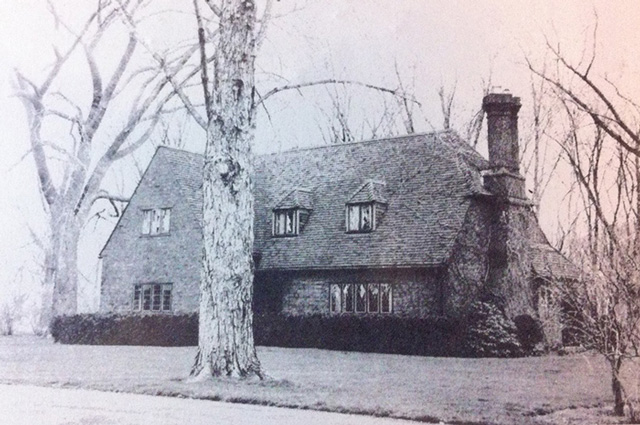
The English-style cottage is located on a large 1.15-acre lot. It is alleged, when the dwelling was built it was surrounded by at least 57 large trees, some of which remain. The house itself is 2,150 sq ft and is constructed of brick with a tile roof incorporating small dormer windows made of leaded glass. The cottage features traditional brickwork, as found on many such homes in England. In fact, the house looks as if it could have been plucked straight out of England and dropped onto the corner of Lake Shore – a testament to Kahn’s attention to detail and level of authenticity in this design. It is reported, prior to building the Ford Estate Kahn traveled to the Cotswold’s in England in preparation for his new project for Edsel Ford. He took numerous photos and made many sketches of the architecture, which is reflected in the Ford House and certainly visible in the design of 1017 Lakeshore. Eleanor Ford would later describe Kahn as “one of the country’s greatest architects”. Overhead shot courtesy of Google.com
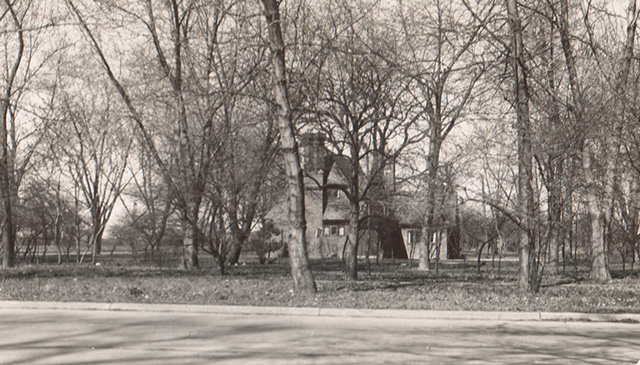
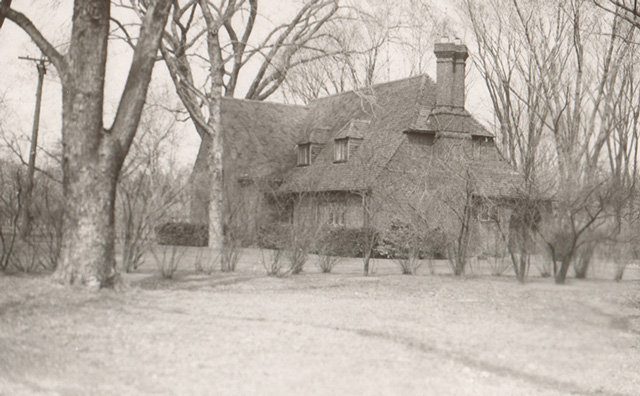
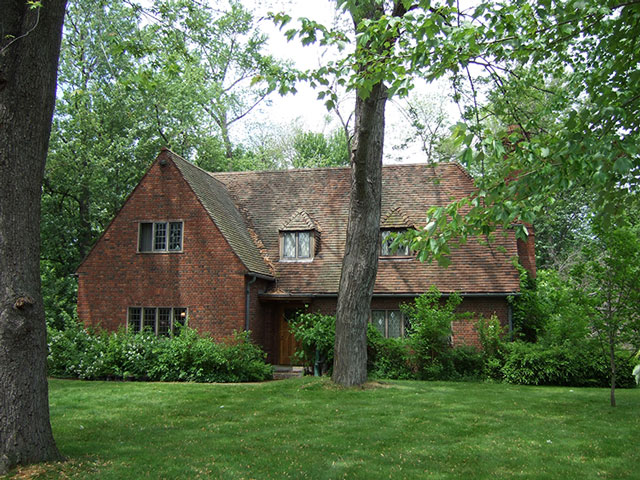
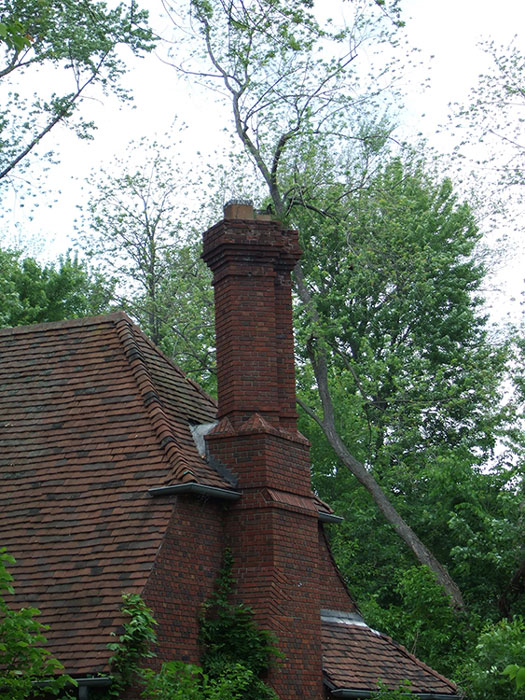
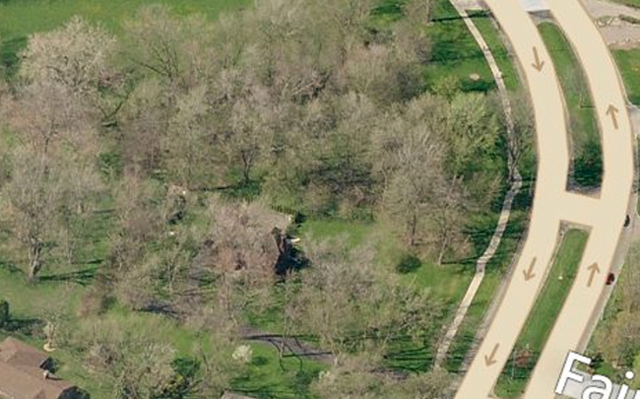
Inside 1017 Lake Shore, the first floor has a 17’ x 15’ sq ft dining room, a 14’ x 11’ sq ft kitchen, and a large 21’ x 18’ sq ft living room which originally featured a large European style fireplace, beamed ceiling, solid oak woodwork, and hardwood floors. There are wide arched entryways between rooms. On the second floor there were originally three bedrooms.
On May 26, 1943, aged just 49 Edsel Ford died. Mrs. Ford put the entire estate up for sale for $500,000 (around $8.9m today), but because of the high price tag and taxes a buyer wasn’t found. Mrs. Ford proceeded to set up a $15 million endowment to ensure the estate would be used for the benefit of the public. It is believed 1017 Lake Shore was then divided from the main estate and was sold as a private home in 1948, to Theodore Alexander McGraw, which included the 1.15-acre lot.
Mr. Theodore Alexander McGraw was born January 9, 1917. He was the son of Dr. Theodore Andrews McGraw, a renowned endocrinologist who owned the splendid 355 Lincoln. Having graduated from St. Paul’s, Theodore Alexander McGraw attended Concord, N.H., and Yale University. Mr. McGraw served in the U.S. Army during World War II, April 1942 to January 1946, in both Europe and the Pacific. On July 14, 1951, he married Helen Stoepel and together they had two children.
For those of you who are not familiar with architect Albert Kahn, he was born on March 21, 1869, in Rhaunen, Kingdom of Prussia (Germany), the oldest of eight children. In 1879, the family relocated to North America, settling in Detroit. It is reported Kahn had no formal education beyond seventh grade, however, at the age of ten he had become an office boy in an architectural firm in Detroit. As a teenager he went to work for the renowned firm of Mason and Rice, creating sketches and acquiring initial training as an architect. Then, in 1891, Kahn was awarded a $500 scholarship (by American Architect and Building News) and traveled to Europe for one year, spending time in England, Belgium, France, Italy, and Germany. When Kahn returned to America he became chief designer for Mason and Rice and went on to form his own architectural firm with George Nettleton and Alexander B. Trowbridge, known as Nettleton, Kahn & Trowbridge. Source: Wikipedia
Kahn would be become one of the greatest architects in the United States. As of 2020, approximately 60 Kahn buildings were listed on the National Register of Historic Places. During his career he worked on at least 20 projects in Grosse Pointe, from the modest to the massive, including residences, public buildings, and the entrance gates to Beverly Road. It is believed many of the ideas that went into his projects in Grosse Pointe were inspired from his time in Europe. Sadly at least half a dozen of his major works have been demolished.
Given that 1017 Lake Shore was originally built as a housekeepers’ residence, you might agree its not as big or as grand as Kahn’s other projects in Grosse Pointe. However, the quaint English Cottage nestled amongst the trees is equally as beautiful and just as well formed.
*Photos courtesy of the Higbie Maxon Agney archives unless stated.
** Research, information, and data sources are deemed reliable, but accuracy cannot be fully guaranteed.
Written by Katie Doelle
Copyright © 2023 Katie Doelle

